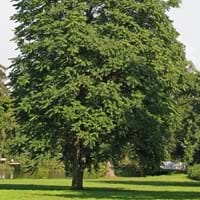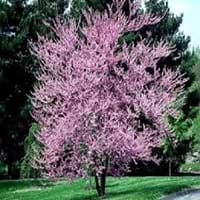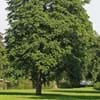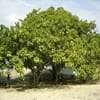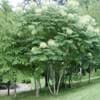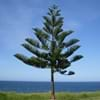Life Span
Perennial
Perennial
Origin
China
Northeastern United States, Mid-Atlantic United States, Southeastern United States, North-Central United States, Central United States, South-Central United States, Canada
Types
Not Available
Not Available
Habitat
Fields, Forest edges, Grassland, Roadsides
Alpine Meadows, shaded woods
USDA Hardiness Zone
4-8
4-9
Sunset Zone
Not Available
1a, 1b, 2a, 2b, 3a, 3b, 7, 8, 9, 10, 11, 12, 13, 14, 15, 16, 17, 18, 19, 20
Habit
Arching/Fountain-shaped
Oval or Rounded
Flower Color
Yellow green, Light Green
Red, Purple, Violet
Flower Color Modifier
Bicolor
Bicolor
Fruit Color
Pink, Light Green, Sienna
Brown, Chocolate
Leaf Color in Spring
Green
Purple, Plum
Leaf Color in Summer
Dark Green
Green, Dark Green
Leaf Color in Fall
Dark Green
Yellow, Yellow green
Leaf Color in Winter
Not Available
Not Available
Leaf Shape
Heart-shaped
Heart-shaped
Plant Season
Spring, Summer
Spring, Summer, Fall
Sunlight
Full Sun, Partial Sun, Partial shade
Full Sun, Partial Sun
Type of Soil
Clay, Loam, Sand
Clay, Loam, Sand
The pH of Soil
Acidic, Neutral, Alkaline
Acidic, Neutral, Alkaline
Soil Drainage
Average
Well drained
Bloom Time
Spring, Late Spring, Early Summer, Summer
Early Spring, Spring, Late Spring
Tolerances
Pollution, Drought, Salt, Soil Compaction
Drought
Where to Plant?
Ground
Ground
How to Plant?
Seedlings
Cuttings
Plant Maintenance
Medium
Medium
Watering Requirements
Average Water Needs, Do Not over Water
Keep the ground moist but not water-logged
In Summer
Drought Tolerant, Average Water
Lots of watering
In Spring
Drought Tolerant, Average Water
Moderate
In Winter
Drought Tolerant, Average Water
Average Water
Soil pH
Acidic, Neutral, Alkaline
Acidic, Neutral, Alkaline
Soil Type
Clay, Loam, Sand
Clay, Loam, Sand
Soil Drainage Capacity
Average
Well drained
Sun Exposure
Full Sun, Partial Sun, Partial shade
Full Sun, Partial Sun
Pruning
Prune in late summer or fall, Prune in late winter, Remove damaged leaves, Remove dead branches, Remove dead leaves
Prune to stimulate growth, Remove damaged leaves, Remove dead branches, Remove dead leaves
Fertilizers
All-Purpose Liquid Fertilizer
All-Purpose Liquid Fertilizer
Pests and Diseases
Red blotch, Spotted Lanterfly
Bacterial Canker, Verticillium Wilt
Plant Tolerance
Drought, Variety of soil types
Drought
Flowers
Insignificant
Showy
Flower Petal Number
Single
Single
Fragrant Bark/Stem
Yes
No
Foliage Texture
Coarse
Medium
Foliage Sheen
Matte
Glossy
Allergy
allergic reaction, Skin irritation
Unknown
Aesthetic Uses
Beautification, Showy Purposes
Beautification, Formal Garden, Ground Cover, Showy Purposes
Beauty Benefits
No Beauty Benefits
Not Available
Environmental Uses
Air purification
Air purification, Food for animals, Food for birds, Nesting sites for birds
Medicinal Uses
Anthelmintic, Antispasmodic, Asthma, Astringent
Unknown
Part of Plant Used
Bark, Root
Not Applicable
Other Uses
Used as Ornamental plant, Used for its medicinal properties, Used for woodware
Beneficial species for attracting pollinators, Used as Ornamental plant
Used As Indoor Plant
No
No
Used As Outdoor Plant
Yes
Yes
Garden Design
Shade Trees, Street Trees
Feature Plant, Foundation, Mixed Border, Shade Trees
Botanical Name
AILANTHUS altissima
CERCIS canadensis 'Forest Pansy'
Common Name
Tree-of-Heaven
Eastern Redbud, Forest Pansy Redbud
In Hindi
कल्पवृक्ष
Forest Pansy Redbud
In German
Baum des Himmels
Forest Pansy Redbud
In French
Arbre de paradis
gainier du Canada
In Spanish
Arbol del Cielo
Cercis canadensis
In Greek
Δέντρο του Ουρανού
Forest Pansy Redbud
In Portuguese
Árvore do céu
Forest Pansy Redbud
In Polish
Drzewo Nieba
Judaszowiec kanadyjski
In Latin
Lignum de caelo
Forest Pansy Redbud
Phylum
Magnoliophyta
Spermatophyta
Class
Magnoliopsida
Magnoliopsida
Family
Simaroubaceae
Fabaceae
Clade
Angiosperms, Eudicots, Rosids
Angiosperms, Eudicots, Rosids
Tribe
Not Available
Not Available
Subfamily
Not Available
Not Available
Number of Species
Not Available
Not Available
Season and Care of Tree-of-Heaven and Forest Pansy Redbud
Season and care of Tree-of-Heaven and Forest Pansy Redbud is important to know. While considering everything about Tree-of-Heaven and Forest Pansy Redbud Care, growing season is an essential factor. Tree-of-Heaven season is Spring and Summer and Forest Pansy Redbud season is Spring and Summer. The type of soil for Tree-of-Heaven is Clay, Loam, Sand and for Forest Pansy Redbud is Clay, Loam, Sand while the PH of soil for Tree-of-Heaven is Acidic, Neutral, Alkaline and for Forest Pansy Redbud is Acidic, Neutral, Alkaline.
Tree-of-Heaven and Forest Pansy Redbud Physical Information
Tree-of-Heaven and Forest Pansy Redbud physical information is very important for comparison. Tree-of-Heaven height is 1,220.00 cm and width 1,070.00 cm whereas Forest Pansy Redbud height is 760.00 cm and width 760.00 cm. The color specification of Tree-of-Heaven and Forest Pansy Redbud are as follows:
Tree-of-Heaven flower color: Yellow green and Light Green
Tree-of-Heaven leaf color: Green
Forest Pansy Redbud flower color: Red, Purple and Violet
- Forest Pansy Redbud leaf color: Purple and Plum
Care of Tree-of-Heaven and Forest Pansy Redbud
Care of Tree-of-Heaven and Forest Pansy Redbud include pruning, fertilizers, watering etc. Tree-of-Heaven pruning is done Prune in late summer or fall, Prune in late winter, Remove damaged leaves, Remove dead branches and Remove dead leaves and Forest Pansy Redbud pruning is done Prune to stimulate growth, Remove damaged leaves, Remove dead branches and Remove dead leaves. In summer Tree-of-Heaven needs Drought Tolerant, Average Water and in winter, it needs Drought Tolerant, Average Water. Whereas, in summer Forest Pansy Redbud needs Lots of watering and in winter, it needs Average Water.
